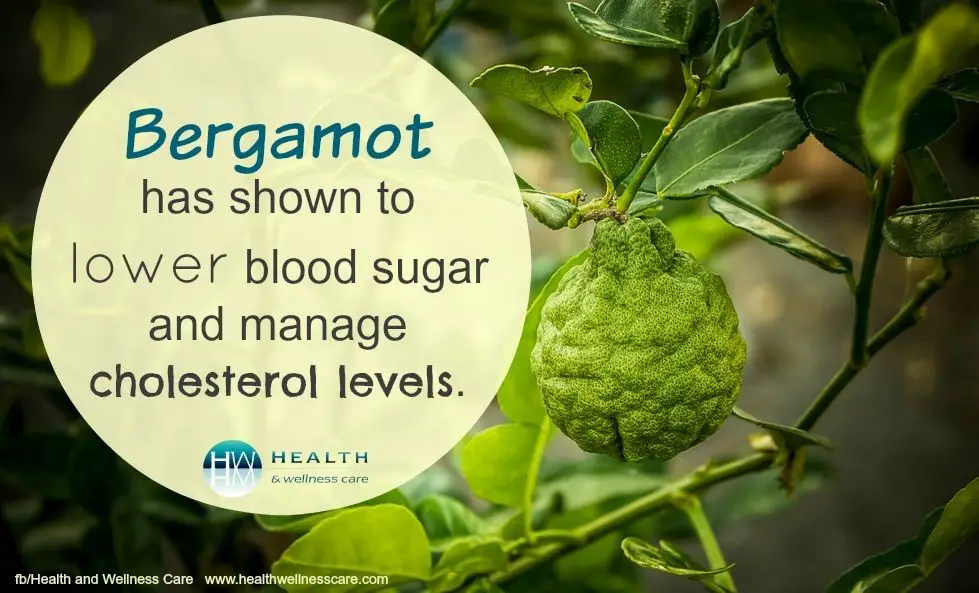How Would You Describe Bergamot?
What is Bergamot?
Bergamot is a citrus fruit that grows on small evergreen trees originally native to Southeast Asia (Merriam-Webster). The name “bergamot” is derived from the Italian city of Bergamo, where the fruit was first commercially cultivated in Europe during the 18th century (Dictionary.com).
Bergamot is about the size of an orange, yellow in color, and has a fragrant peel and flesh (Collins Dictionary). It is considered a hybrid citrus fruit, likely originating from a cross between lemon and bitter orange trees.
Today, bergamot is best known for its essential oil, which is cold pressed from the rind of the fruit. Bergamot essential oil is a popular ingredient in perfumes, cosmetics, aromatherapy, and as a flavoring. The fruit itself is seldom eaten as fresh produce. However, both the zest and juice are used as flavorings, especially in Earl Grey tea.
Bergamot’s Appearance and Taste
Bergamot is a citrus fruit that grows primarily in the coastal Calabria region of southern Italy. It is about the size of an orange, usually round in shape, and turns yellow as it ripens. According to Stash Tea, the rind of the bergamot fruit is bumpy and extremely fragrant.
The taste and aroma of bergamot is often described as a cross between a lime and a lemon, with sweet floral undertones. The juice inside the bergamot fruit is very bitter and acidic, making it inedible. However, the essential oil extracted from the rind has a distinctive citrusy, spicy flavor. As described by Farmers’ Almanac, the essence of bergamot is both tart and sweet, with nuances of pear and rose.
Cultivation
Bergamot requires a subtropical climate with mild winters to thrive. It grows best in the Mediterranean climate found along the coast of the Calabrian region in southern Italy. This area provides the hot, sunny summers and cool, humid winters that bergamot needs to produce high quality fruit.
Over 90% of the world’s bergamot is grown in the province of Reggio Calabria in Italy (Factum-info.net, 2022). The towns of Villa San Giovanni, Reggio Calabria, and Rocca Imperiale are the main production centers. Bergamot grown in Calabria benefits from the area’s unique terroir, including volcanic soils and sea breezes.
Other countries that produce small amounts of bergamot include Ivory Coast, Morocco, Argentina, Brazil, Algeria, Tunisia, Turkey, and South Africa. However, the fruit from Calabria is considered superior in aroma, flavor, and oil content.
Health Benefits

Bergamot is a nutrient-dense citrus fruit that provides a variety of important vitamins, minerals and bioactive plant compounds. Some key nutrients found in bergamot include vitamin C, potassium, flavonoids and polyphenols.
Several scientific studies have shown bergamot may offer numerous benefits for health:
- May lower cholesterol levels – A review published in Frontiers in Pharmacology showed bergamot can reduce total cholesterol and LDL “bad” cholesterol (Source 1).
- May regulate blood sugar – Human studies indicate bergamot may improve insulin sensitivity and blood sugar control in people with diabetes or metabolic syndrome (Source 2).
- May promote heart health – Bergamot contains flavonoids that have antioxidant and anti-inflammatory effects to support cardiovascular function.
- May aid weight loss – Early research suggests bergamot polyphenols may help increase fat burning and energy expenditure.
Overall, bergamot appears to be an excellent source of antioxidants and beneficial plant compounds that can promote health and wellness.
Culinary Uses
Bergamot is a popular ingredient for flavoring various foods and beverages. Its distinctive citrus aroma and slightly sweet yet tart taste make it a versatile culinary ingredient. Some of the most common uses of bergamot in cooking include:
Tea – Bergamot oil is used to flavor many blends of black tea, most notably Earl Grey tea. The oil provides a bright, refreshing citrus taste that pairs well with the boldness of black tea (The Epicentre Spices).
Cakes and pastries – Bergamot zest and juice can be used to add flavor to cakes, cookies, pies, and other baked goods. A small amount provides a lovely citrus aroma and acidity that balances sweetness (Pinterest).
Jams and marmalades – Bergamot is excellent for making citrus preserves due to its bright, fresh flavor. It can be combined with other citrus fruits or used on its own to make bergamot marmalade.
Cocktails – Bergamot juice and peel are used to make citrus-forward cocktails. Popular bergamot cocktails include the Bees Knees, Earl Grey MarTEAni, and Lavender Bergamot Sour.
Salad dressings – Bergamot juice adds a lovely floral citrus note to vinaigrettes and salad dressings. It pairs especially well with herbs, honey, and citrus juices like lemon and lime.
Marinades – The citrus juice and zest infuse bright flavor into meat, fish, and vegetable marinades. Bergamot works well in Mediterranean and Asian-inspired marinades.
With its diverse flavors and uses, bergamot is a unique ingredient that can enhance many dishes and beverages.
Non-Culinary Uses
Bergamot oil has many popular non-culinary uses, primarily in cosmetics and aromatherapy:
Cosmetics: Bergamot oil is commonly used in perfumes, soaps, shampoos, and skin care products due to its refreshing citrus scent and antimicrobial properties. It can help cleanse and tone skin and treat skin conditions like acne. Bergamot is a common ingredient in Earl Grey tea-scented toiletries.
Aromatherapy: In aromatherapy, bergamot essential oil is used to help reduce stress, anxiety, depression, and insomnia. Its bright, uplifting scent is thought to stimulate hormones like serotonin and dopamine. Bergamot oil can be diffused, added to massage oils, or used topically when diluted with a carrier oil. It blends well with lavender, geranium, and clary sage oils.1
Bergamot oil production: Nearly all bergamot essential oil comes from Calabria, Italy. The bergamot oranges are hand-picked, and the rinds are cold-pressed to extract the essential oil. It takes about 100 bergamot oranges to produce just 1 ounce of bergamot oil.
Notable Compounds
Bergamot contains over 300 aromatic compounds that contribute to its unique flavor and fragrance profile. Here are some of the most notable:
Limonene
This compound makes up about 38% of bergamot oil. It’s responsible for the bright, citrusy aroma.
Linalool
This floral compound gives bergamot its sweet, delicate scent. It makes up about 24% of the essential oil.
Linalyl acetate
This ester contributes to bergamot’s fruity, candy-like notes. It accounts for around 14% of the oil.
γ-Terpinene
This compound adds peppery, woody undertones. It constitutes around 5% of bergamot oil.
β-Pinene
This pine-scented terpene provides an earthy, herbal quality. It makes up around 5% of the essential oil.
Together, these aromatic molecules give bergamot its distinct citrus meets floral flavor and fragrance profile, with hints of spice and herbs.
Availability
Bergamot is a citrus fruit with a relatively short season. The bergamot orange tree blossoms during the spring and the fruit ripens from winter through early spring. The peak season for fresh bergamot is typically December through March. During this time, bergamot can be found at some specialty grocery stores, farmers markets, and online retailers that focus on exotic citrus. However, availability is quite limited even in peak season.
Outside of its peak season, bergamot can be difficult to source fresh. Some common substitutions for bergamot include other citrus fruits like lemon, lime, grapefruit, or orange. These can approximate the bright, tart citrus flavor of bergamot when fresh bergamot is not in season. Dried bergamot peel or bottled bergamot juice are other potential stand-ins during the off season. Bergamot essential oil also maintains the aromatic qualities when fresh bergamot is not available.
How to Select and Store
When selecting bergamot at the market, it’s important to choose fruits that are fully ripe for the best flavor. Look for bergamots that are bright yellow in color with smooth skin free of blemishes or soft spots. The fruit should feel heavy for its size and give slightly when gently pressed.
According to agriculture.gov.capital, ripe bergamots can be stored at room temperature for up to one week. For longer storage, place unwashed fruits in a perforated plastic bag and keep refrigerated for up to 3-4 weeks. Storing in the refrigerator helps slow moisture loss and decay. However, extended refrigeration can cause the peel to fade in color and become slightly dry. Bergamot is best consumed soon after purchasing for peak flavor and juiciness.
Interesting Facts
Bergamot has a very unique and complex aroma that has made it famous worldwide. However, there are some lesser known facts about this special citrus fruit
- No one knows for sure how bergamot came to be added to tea. The earliest recorded English reference to adding bergamot flavor to tea is from 1837. Some theories suggest it was first added by an English diplomat in the early 18th century. The Earl Grey tea blend, flavored with bergamot, was later named after Charles Grey, the second Earl Grey in the 1830s. (Source)
- Bergamot likely gets its name from the Italian city of Bergamo. The Turkish word “beg-armudi” meaning “prince’s pear” may have also influenced the name. (Source)
- Bergamot is one of the main botanical sources of the compound bergapten, which is a naturally occurring psoralen. Psoralens can make skin more sensitive to sunlight and cause sunburns in some cases. (Source)





